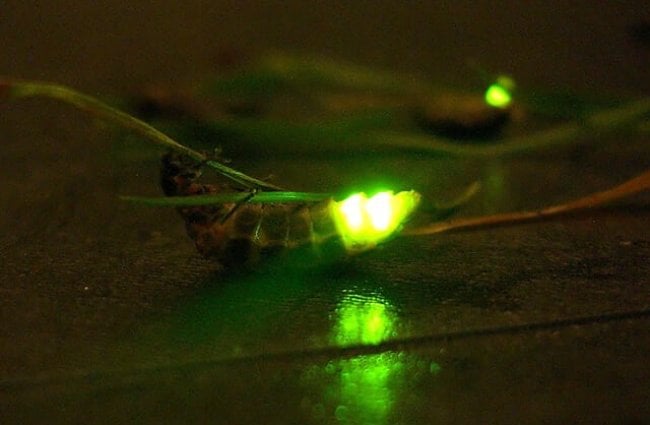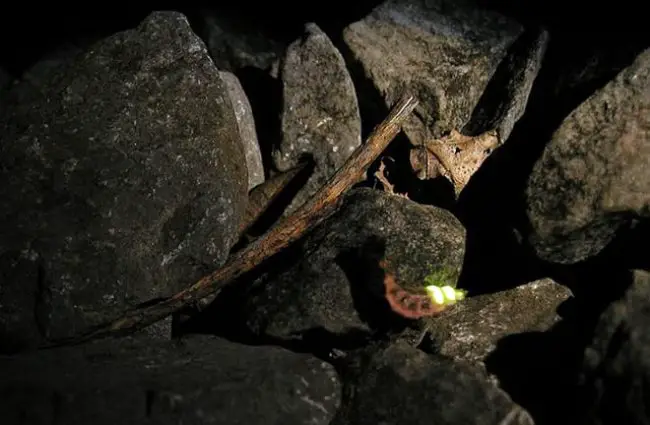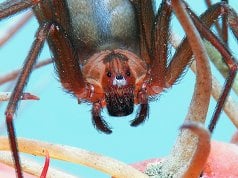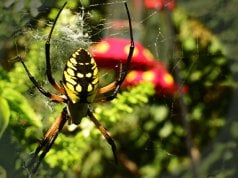Unveiling the Enigmatic Glow Worm: A Luminous Marvel of the Night
Deep within the twilight hours, where shadows lengthen and the world hushes, a tiny, living beacon often emerges, captivating observers with its ethereal glow. This is the glow worm, a creature frequently misunderstood, yet utterly fascinating. Far from being a mere worm, these bioluminescent marvels are actually the larval or larviform adult stages of certain beetle species, or even the larvae of specific fungus gnats. Their captivating light show is not just a spectacle; it is a vital tool for survival, communication, and predation in their hidden worlds.
Join us on a journey to explore the secrets of the glow worm, from its shimmering biology to its intricate role in the ecosystem, and discover why these humble creatures continue to ignite our imagination.

What Exactly is a Glow Worm? Dispelling the Myth
The term “glow worm” is a charming misnomer. These creatures are not worms at all, but rather insects that exhibit bioluminescence. The most commonly recognized “glow worms” fall into two main categories:
- Beetles (Family Lampyridae): These are true beetles, closely related to fireflies. In many species, particularly the European common glow worm (Lampyris noctiluca), it is the wingless, larviform female adult that glows to attract a winged male. The larvae of these beetles also glow, though often less intensely.
- Fungus Gnats (Family Arachnocampidae): Found predominantly in Australia and New Zealand, these are the larvae of specific gnat species, such as Arachnocampa luminosa, famous for illuminating caves. Unlike the beetles, here it is primarily the larval stage that produces light, using it to lure prey.
The common thread uniting these diverse insects is their ability to produce “cold light” through a biochemical reaction, a phenomenon known as bioluminescence.
The Science of Light: How Glow Worms Shine
The glow of a glow worm is not magic, but a marvel of natural chemistry. Bioluminescence is the production and emission of light by a living organism. In glow worms, this process involves a complex interaction of several key components:
- Luciferin: A light-emitting organic molecule.
- Luciferase: An enzyme that catalyzes the reaction.
- Adenosine Triphosphate (ATP): The energy currency of the cell, providing the necessary power.
- Oxygen: A crucial reactant in the chemical process.
When these components combine within specialized light organs, a chemical reaction occurs that releases energy primarily as light, with very little heat. This efficiency is why it is called “cold light.” The color of the light can vary between species, often appearing as a greenish-yellow or blue-green hue.
Where to Find These Luminous Beacons: Glow Worm Habitats
Glow worms are particular about their living conditions, generally preferring environments that are damp, dark, and undisturbed. Their specific habitat requirements vary depending on the species:
- Terrestrial Glow Worms (e.g., Lampyris noctiluca):
- Location: Primarily found across Europe and parts of Asia.
- Preferred Environments: Damp grasslands, hedgerows, woodland edges, heathland, and gardens. They often favor areas with long grass or leaf litter where they can hide during the day.
- Key Factors: High humidity is crucial for their survival, and they are sensitive to desiccation. They also require a healthy population of their prey, typically snails and slugs.
- Cave Glow Worms (e.g., Arachnocampa luminosa):
- Location: Endemic to New Zealand and parts of Australia.
- Preferred Environments: Deep, moist caves, sheltered overhangs, and dense, humid forests.
- Key Factors: Stable high humidity, consistent temperatures, and an absence of strong air currents are vital for maintaining their delicate silk lines and preventing dehydration.
For the Animal Lover: How to Find a Glow Worm in the Wild
If you are hoping to witness the magic of glow worms, timing and location are everything:
- Time of Year: For terrestrial glow worms, late spring to late summer (June to August in the Northern Hemisphere) is typically the best time, when adults are active. Cave glow worms can be seen year-round.
- Time of Day: They are strictly nocturnal. Begin your search shortly after dusk, as darkness settles.
- Weather Conditions: A warm, damp, still evening is ideal. Avoid windy or very cold nights.
- Location:
- For terrestrial species, seek out undisturbed, damp grassy areas, woodland edges, or old hedgerows away from artificial light sources.
- For cave species, guided tours of specific glow worm caves (e.g., Waitomo Caves in New Zealand) are the most reliable way to observe them.
- Observation Tips:
- Allow your eyes to adjust to the darkness for at least 15-20 minutes.
- Move slowly and quietly.
- Avoid using bright flashlights, as this can disturb them and diminish their glow. If you must use a light, a red-filtered flashlight is less disruptive.
- Look for small, steady points of light, often low to the ground or on vegetation.

A Carnivorous Appetite: What Glow Worms Eat
Despite their delicate appearance, glow worms are formidable predators, especially in their larval stages. Their diet is specialized and plays a crucial role in their respective ecosystems:
- Terrestrial Glow Worm Larvae (e.g., Lampyris noctiluca):
- Primary Diet: Snails and slugs. These larvae are highly adapted molluscivores.
- Hunting Strategy: They track their prey using chemical cues, then inject them with paralyzing and digestive fluids. The larva then sucks out the liquefied contents of the snail or slug. This process can take several hours.
- Adult Diet: Adult female glow worms typically do not feed, relying on energy reserves built up during their larval stage. Adult males may consume small amounts of nectar or dew, but feeding is not their primary focus.
- Cave Glow Worm Larvae (e.g., Arachnocampa luminosa):
- Primary Diet: Small flying insects such as midges, mosquitoes, mayflies, and even other small invertebrates.
- Hunting Strategy: These larvae construct elaborate “fishing lines” made of silk, studded with sticky mucus droplets. They hang these lines from cave ceilings or overhangs and use their bioluminescent glow to attract prey, which become entangled in the sticky threads.
- Adult Diet: Adult fungus gnats have very short lifespans and generally do not feed.
The Circle of Life: Mating and Reproduction
The glow worm’s life cycle is a testament to nature’s ingenuity, often revolving around the brief, intense period of adult reproduction:
- Eggs: After mating, the female glow worm lays a clutch of small, spherical eggs, often in damp soil or under leaf litter. These eggs may also exhibit a faint glow.
- Larval Stage: This is the longest and most active stage of the glow worm’s life, lasting anywhere from one to three years. During this time, the larva grows, molting several times. It is in this stage that the larvae are voracious predators, building up energy reserves. Both terrestrial beetle larvae and fungus gnat larvae glow, though the purpose and intensity can differ.
- Pupal Stage: Once fully grown, the larva pupates, transforming into an adult. This stage is typically inactive and lasts for a few weeks.
- Adult Stage: The adult stage is remarkably short, often lasting only a few days to a few weeks.
- Female Terrestrial Glow Worms: These are typically wingless and larviform, meaning they retain a larval appearance. Their primary purpose is to emit a bright, steady glow from their abdominal segments to attract a mate. They often climb onto vegetation to make their light more visible.
- Male Terrestrial Glow Worms: These are winged beetles, capable of flight. They are attracted to the female’s light and fly in search of her.
- Cave Glow Worms (Adult Gnats): Both male and female adult fungus gnats are winged and resemble small mosquitoes. Their main goal is to mate and lay eggs before their short lives end.
Mating occurs when a male finds a glowing female. After copulation, the female lays her eggs and soon dies, having fulfilled her life’s purpose. The entire cycle is a race against time, driven by the imperative to reproduce.

Evolutionary Journey: A History of Light
The evolution of bioluminescence is a fascinating story, believed to have occurred independently multiple times across various lineages. In the case of glow worms, the ability to produce light has been refined over millions of years to serve specific ecological roles:
- Predation: For species like the Arachnocampa larvae, the glow evolved as an ingenious trap, mimicking moonlight or starlight to lure unsuspecting flying insects into their sticky snares.
- Communication: For beetle glow worms (Lampyridae), bioluminescence primarily serves as a sexual signal. Females use their light to advertise their presence and attract mates in the darkness, a highly efficient way to find each other in dense vegetation.
- Warning Signal: While less prominent in glow worms compared to some other bioluminescent organisms, light can also sometimes serve as a warning to predators, indicating unpalatability.
The specific genes and biochemical pathways involved in light production have been studied, revealing the intricate molecular machinery behind this spectacular adaptation. The diversity of glow worm species and their varied uses of light highlight the powerful role of natural selection in shaping life on Earth.
Glow Worms in the Ecosystem: More Than Just a Pretty Light
Glow worms, despite their small size, play significant roles within their ecosystems:
- Pest Control (Terrestrial Species): The carnivorous larvae of beetle glow worms are important predators of snails and slugs, which can be agricultural and garden pests. Their presence indicates a healthy balance in the local invertebrate community.
- Food Source: While their light might deter some predators, glow worms themselves can become prey for birds, bats, spiders, and other insectivores, especially during their non-glowing stages.
- Indicator Species: Because they are sensitive to habitat disturbance, pollution, and artificial light, a thriving population of glow worms can be an indicator of a healthy, undisturbed environment.
- Cave Ecosystem Dynamics (Cave Species): Arachnocampa larvae are crucial predators of flying insects within cave systems, influencing the populations of other cave-dwelling invertebrates. Their silk lines also provide microhabitats for other tiny organisms.

Glow Worms and Humanity: Culture, Conservation, and Coexistence
Glow worms have long captured the human imagination, inspiring wonder and playing a role in various aspects of human culture and interaction.
Glow Worm’s Contribution to Human Culture
- Folklore and Mythology: Their mysterious light has led to their inclusion in local folklore and legends, often associated with fairies, spirits, or magical occurrences.
- Poetry and Literature: Poets and writers have frequently used the glow worm as a symbol of hope, fleeting beauty, or hidden light in darkness.
- Tourism: Cave glow worms, particularly in New Zealand, are major tourist attractions, drawing visitors from around the world to witness their spectacular displays. This provides significant economic benefits to local communities.
Glow Worm’s Interaction with Humans
- Observation and Appreciation: For many, encountering a glow worm in the wild is a magical experience, fostering a deeper connection with nature.
- Scientific Study: Their unique bioluminescence makes them subjects of ongoing scientific research, particularly in fields like biochemistry and evolutionary biology.
- Conservation Efforts: Human activities pose significant threats to glow worm populations, leading to increased conservation awareness and efforts.
Conservation Concerns and What You Can Do
Glow worm populations are facing increasing pressure from human activities:
- Habitat Loss: Development, intensive agriculture, and changes in land use destroy the damp, undisturbed habitats they rely on.
- Light Pollution: Artificial light at night (ALAN) is a major threat. It can disrupt the mating process of terrestrial glow worms by making the female’s signal less visible to males, or by disorienting males.
- Pesticide Use: Insecticides and molluscicides can directly harm glow worms and their prey, disrupting the food chain.
- Climate Change: Changes in temperature and rainfall patterns can affect humidity levels and prey availability, impacting glow worm survival.
What You Can Do:
- Reduce Light Pollution: Turn off unnecessary outdoor lights, use downward-facing fixtures, and consider warm-colored LEDs.
- Create Wildlife-Friendly Gardens: Provide damp, undisturbed areas with long grass or log piles. Avoid pesticides.
- Support Conservation: Advocate for protected natural spaces and responsible land management.
- Educate Others: Share the wonder and importance of glow worms with friends and family.
Encountering a Glow Worm: A Hiker’s Guide
If you are fortunate enough to encounter a glow worm during a night hike, remember these guidelines to ensure their well-being and your continued enjoyment:
- Observe from a Distance: Admire their glow without getting too close.
- Do Not Touch: Glow worms are delicate. Handling them can cause stress, injury, or remove their protective mucus layers.
- No Flash Photography: Bright flashes can disorient them and disrupt their natural behavior.
- Minimize Light: If you need a flashlight, use a red filter or direct the beam away from the glow worms.
- Stay on Trails: Avoid trampling vegetation where they might be resting or glowing.
- Leave No Trace: Take nothing but pictures, leave nothing but footprints.

Caring for Glow Worms in Captivity: A Zookeeper’s Perspective
Keeping glow worms in captivity, especially terrestrial species, is challenging and generally not recommended for casual enthusiasts. Their specific environmental and dietary needs make them difficult to maintain. However, for zoological institutions or research facilities, careful protocols are essential:
Tasks for a Zookeeper:
- Habitat Replication:
- Substrate: Provide a deep layer of damp, loose soil mixed with leaf litter.
- Humidity: Maintain high humidity (70-90%) through regular misting, but ensure good ventilation to prevent mold.
- Temperature: Keep temperatures stable and within their natural range (typically 15-20°C or 59-68°F).
- Darkness: Ensure complete darkness during their active periods. Any artificial light must be minimal and red-filtered.
- Enclosure Size: Provide ample space for larvae to hunt and adults to move.
- Diet:
- Live Prey: For terrestrial larvae, provide a consistent supply of appropriately sized live snails and slugs. These must be healthy and free of pesticides.
- Water: Ensure access to moisture, often through misting or damp substrate, as they drink dew.
- Monitoring:
- Regularly check for signs of stress, disease, or dehydration.
- Monitor feeding behavior and growth rates.
- Observe glowing patterns and intensity, especially during mating season.
- Breeding Programs: For conservation or research, controlled breeding programs require precise environmental conditions and careful management of adult pairing.
What Should Be Avoided:
- Direct Handling: Minimize handling to prevent injury or stress.
- Bright Lights: Avoid any bright white light during their active periods.
- Chemicals: Do not use pesticides or harsh cleaning agents near their enclosure.
- Dry Conditions: Allowing the enclosure to dry out can be fatal.
- Overcrowding: Can lead to stress, competition for food, and disease.
- Inconsistent Feeding: Larvae require a steady supply of prey.
For cave glow worms, captive care is even more complex, often requiring specialized cave-like environments with precise airflow and humidity controls to maintain their delicate silk lines and prey populations.
A Huge List of Interesting Facts About Glow Worms
- The “worm” in glow worm is a misnomer; they are actually beetles or fungus gnat larvae.
- Their light is “cold light,” meaning less than 10% of the energy is lost as heat.
- A female European glow worm’s light can be seen up to 50 meters away on a dark night.
- Some glow worm eggs can also emit a faint glow.
- The larval stage of a glow worm can last for up to three years, while the adult stage may only last a few days.
- Adult female terrestrial glow worms often lack wings and mouthparts, dedicating their short lives solely to attracting a mate.
- Cave glow worms (Arachnocampa) use their light to lure prey into sticky silk traps, much like a spider’s web.
- The intensity of a glow worm’s light can sometimes be controlled by the insect, often increasing when a mate is detected or when disturbed.
- Different species of glow worms can produce light of varying colors, from green to blue.
- Glow worms are sensitive bio-indicators; their presence often signifies a healthy, unpolluted environment.
- They are found on every continent except Antarctica.
- The chemical reaction for bioluminescence is remarkably similar across many different glowing organisms, suggesting a common evolutionary origin or convergent evolution.
- Some male glow worms also glow, though usually less intensely and often in flight, to signal their presence to other males or to navigate.
- The glow worm’s light is a form of communication that predates human language by millions of years.
Conclusion: The Enduring Allure of the Luminous Night
From the damp undergrowth of a European forest to the cavernous depths of a New Zealand cave, the glow worm stands as a testament to nature’s boundless creativity. These tiny, unassuming creatures, with their internal lanterns, remind us that even in the darkest corners of our world, there is light, purpose, and intricate beauty waiting to be discovered. Understanding and protecting them is not just about preserving a species; it is about safeguarding the delicate balance of our ecosystems and cherishing the natural wonders that continue to inspire awe and curiosity in all of us. So, the next time you find yourself in a quiet, dark place, keep an eye out for that faint, emerald shimmer – it might just be a glow worm, inviting you into its luminous world.






![Red Angus Closeup of a beautiful Red Angus cowPhoto by: U.S. Department of Agriculture [pubic domain]https://creativecommons.org/licenses/by/2.0/](https://animals.net/wp-content/uploads/2020/03/Red-Angus-4-100x75.jpg)

